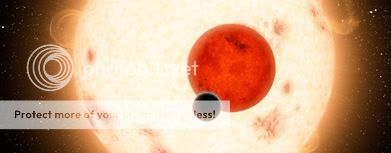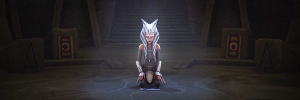Funny both of you should mention the early-morning Orion viewing...I'm not much of a morning person, so my wee-hour observing has been lax of late.
But yesterday I got up around 0530 to give my father a ride to the shuttle bus stop - and it was great to see Orion blazing in the southeast sky, not to mention Sirius to his lower left.
Jupiter was a bright beacon high in the southwest, and for a split second I wondered if I'd hit upon an unexpected ISS pass. 
You ever have any luck with it gazer?
No, SL, I've never managed to spot the Horsehead on my own (observatory public nights or star parties are another story). I confess I haven't tried of late, surrounded as I am by millions of city lights.
These rapidly-lengthening nights mark the impending arrival of the next seasonal landmark: the September equinox. Coming officially at 0904 GMT on the 23rd, day and night are of roughly equal length worldwide. Autumn begins in the Northern Hemisphere and spring in the Southern.
But all night, Aslan and the Moon gazed upon each other with joyful and unblinking eyes.
Ah, but did ya' see Aldebaran and that nice V shape of Taurus the Bull?  I saw Sirius too, gazer. Funny to think such a massive star is only about 8 light years away. It'll be one of the first we get to explore in the New Earth.
I saw Sirius too, gazer. Funny to think such a massive star is only about 8 light years away. It'll be one of the first we get to explore in the New Earth. 
Kennel Keeper of Fenris Ulf

Glad you were up early yesterday to see those wonders, stargazer! And I meant to mention Sirius and stunning Jupiter as well. With Cassiopeia's "W" nearly directly above. There are no proper words for the beauty ...
With the many equinoxes I have experienced over the years, we have found that it often rains during September's. So, we have learned not to plan outside activities on that weekend. Hmm, the 23rd is a teeny bit later this year, isn't it? From what I recall, it's often on the 22nd.
With clear skies (aside from this evening) for the next 3 or 4 nights, I'm looking forward to some good star-gazing, especially now that it's dark by 8 p.m. or so. 

Signature by Narnian_Badger, thanks! (2013)
7,237 posts from Forum 1.0
I haven't been doing much stargazing lately; school takes up so much time. But a friend posted this and I thought I would share: http://lightyears.blogs.cnn.com/2011/09/15/tatooine-gives-first-direct-proof-of-2-sun-planet/?hpt=hp_c1 Astronomers have found a planet with two suns and have nicknamed it Tatooine. I admit I geeked out a little bit when I read it. 
Dot has beaten me to the punch. I was coming in here to post about the same thing.  Yeah, I was also a bit geeked out a little bit this morning when I read the story. Here's the picture that Yahoo posted, I don't know if it's a real picture or not, but it looks cool
Yeah, I was also a bit geeked out a little bit this morning when I read the story. Here's the picture that Yahoo posted, I don't know if it's a real picture or not, but it looks cool  .
.

Tatooine.  Clever name. Thanks, dot and fantasia_kitty, for mentioning this discovery.
Clever name. Thanks, dot and fantasia_kitty, for mentioning this discovery.
For more info, check out this article which includes light curves and the proposed orbit of the planet.
In other news, the UARS (Upper Atmosphere Research Satellite), launched from a shuttle back in 1991, is expected to reenter the atmosphere and burn up sometime next week (best current estimate is September 23). At this time, more details (when it will reenter, where it will be visible and where any debris may land) are unavailable. NASA's UARS page offers the most recent updates.
And the home page for www.heavens-above.com now features a map showing where the UARS is now, and offers predictions for seeing it in the sky. Check it out while you still can!
But all night, Aslan and the Moon gazed upon each other with joyful and unblinking eyes.
Apparently UARS fell to earth in an isolated spot...no confirmed sightings of its reentry have come to light so far.
But there's something new to look at: on Thursday, China launched a currently-unmanned experimental space station called Tiangong-1 ("Heavenly Palace"). It's another satellite to watch from the ground, and predictions for it are available both on heavens-above and Spaceweather. Its brightest passes (at least from my location) are around magnitude zero - about as bright as Vega (still high overhead at dusk from northern locations) or Alpha Centauri (in southern locations).
There are also some large sunspots present now, which might cause solar flares and possible auroras (northern or southern lights). Spaceweather is a good site to watch for aurora reports.
But all night, Aslan and the Moon gazed upon each other with joyful and unblinking eyes.
This thread has been quiet for too long. 
Now that it's Autumn-cool  the opportunities for star-gazing are greatly increased, both with the earlier sunset and the clear, crispness of the sky—such a wonderful contrast from the humidity of the summer.
the opportunities for star-gazing are greatly increased, both with the earlier sunset and the clear, crispness of the sky—such a wonderful contrast from the humidity of the summer.
I've been enjoying the early-morning-before-dawn sky views, with Orion blazing its way across the SW sky, and brilliantly burning Jupiter eyeing him carefully from its spot in the west. Sirius is looking on, too, from behind. So many great sights to enjoy: Cassiopeia, the Pleiades, and, of course, the Big Dipper in Ursa Major. And, in the east, as I head home from my walk, blushing Mars can be seen rising, rising. I think I saw Saturn in the SE, closer to the horizon this morning, but even though the sky was dark overhead, the dawn's rose-coloured rays made it difficult to know for sure.
I've been able to view some lovely, long ISS passes, as well as a few Iridium flares. I haven't yet looked for the Tiangong1, stargazer. Have you see it?

Signature by Narnian_Badger, thanks! (2013)
7,237 posts from Forum 1.0
The clear skies have been really nice around here in the day time: such a nice, azul blue. However, at night-time everything gets cloudy and jumbled...at least for the past week, which leads to my question- the cloudy sort of atmosphere, with dark blue, orange, and very bright spots over the sky--are those the Northern Lights, perhaps a little dimmed by a thin sheet of clouds? We've been seing them when we go on walks and the light the sky casts is so spectacular and bright, but I just wanted to ascertain. 
I wonder when the stars will be visible! I've managed to see the Big Dipper and have been trying to follow the tips you all so nicely gave me at the beginning of this thread, but I wish the stars stuck out a little more...

RL Sibling: CSLewisNarnia
Nice to see a little action here again...
Halloween approximately marks the cross-quarter day that is halfway between the autumn equinox and winter solstice (in the Northern Hemisphere). The days are rapidly getting shorter here, and beginning tomorrow (when much of North America goes off Daylight Saving Time), the sun will set before 5 pm.
These long nights are great for stargazing (it's not too cold yet.  ). Just last night I enjoyed a campfire with Ryadian's family and other friends, taking the chance to view Jupiter (that bright beacon visible in the east long before it's very dark) and the Moon.
). Just last night I enjoyed a campfire with Ryadian's family and other friends, taking the chance to view Jupiter (that bright beacon visible in the east long before it's very dark) and the Moon.
The bright Summer Triangle of Vega, Deneb, and Altair remains well up in the western sky at dusk (again, for Northern Hemisphere viewers).
And in the morning, Orion and his entourage march across the sky, and the spring stars of Leo are out as well. As jo mentioned, Mars is out in the mornings now, and continues to brighten for its next opposition (time of best viewing) early next year.
Glad you've spotted Saturn, jo! You must have a good horizon (few trees or buildings) toward the southeast.
In answer to your question, I haven't spotted the Tiangong 1 yet, jo, though of late I've not had very favorable opportunities to try. The much-brighter ISS is coming back into view; I saw it the other evening after a 5-week absence.
AITB, I'm not sure if what you're describing is Northern Lights or not, but they certainly could be. Things to note while you're watching them:
- Do they appear to shimmer, or pulse, or otherwise move? The brighter displays (those with bright red, purple, green, or other colors) often do (the really dim ones, which are usually white or green, often appear as just a patch of light in the north and not show much activity).
-Can you see stars through the light? (This is not always a definitive test, because sometimes clouds are thin enough to show stars).
-Are they primarily in the northern sky (for Northern Hemisphere viewers)? Really bright displays can cover the whole sky, but dimmer ones often lurk only in the north.
-Are you near a big city which might be lighting up clouds, or in a more rural area where clouds tend to be dark spots against the sky? (I live in an urban area, and occasionally those thin cirrus clouds can be lit up by city lights, or the Moon, making them look a bit like Northern Lights).
For star identification, the planispheres others have mentioned help a lot. Another option is the Whole sky chart option on http://www.heavens-above.com (be sure to enter your location first, using select from database near the top of the page, to personalize the star charts and satellite predictions for your town).
But all night, Aslan and the Moon gazed upon each other with joyful and unblinking eyes.
Thanks for your response, Gazer! 
I don't exactly know if they were moving. They might have sometimes shimmered a little or not, but I recall a very burnt orange that was spread out through most of my view of the sky, and then over in the side a patch of very white light...
There was too much of jumble and clouds to see starts. 
-Are they primarily in the northern sky (for Northern Hemisphere viewers)? Really bright displays can cover the whole sky, but dimmer ones often lurk only in the north.
I'll have to locate a compass to answer this one. 
We live in a mostly area, except for a few patches of urban areas. City lights are not very present, but our neighbours have a distinct, bright white floodlight in their yard, so I don't know what effect that might have.
Ooh, thanks so much for the site! I'm going to go and take a look around it. 

RL Sibling: CSLewisNarnia
I saw the southern lights a week ago. It was a faint glow. But I saw them. It was really cool.

The Hobbit in theaters: 14 December 2012
The Southern Lights are something I want to see - even if they look just like the Northern variety. Maybe when I make that trip Down Under someday!
A few things to watch for this week:
The Moon passes by Jupiter November 8 and 9. Both should be easy to spot, even before it gets fully dark.
If you have a really good southwest horizon, check out Mercury and Venus near each other, just after sunset, low in that direction.
Later this week, Mars passes just north of Leo's brightest star, Regulus, for those watching the southeast sky in the wee hours of the morning. Check out the diagram here.
I have a magnitude -7 (quite bright) Iridium flare opportunity this evening - if the sky stays clear. Clouds, with rain and snow, are coming this way.
In the trivia department, a 400-m wide mini-asteroid will pass between the earth and the moon November 8. It won't cause any trouble and will not visible without the right equipment, however. More details.
But all night, Aslan and the Moon gazed upon each other with joyful and unblinking eyes.
I'l look for that stuff. I have never seen a planet in the sky. I'l look tonight.
edit: I can see Jupiter now. It is easy to see Just look to the lower left by the moon.

The Hobbit in theaters: 14 December 2012
Tonight is the peak of the Leonid meteor shower, named because they appear to come from the constellation Leo, the Lion, which rises around 1 am in mid-northern latitudes.
This for the most part is a pretty obscure shower, bringing maybe 20 meteors each hour from a good, dark location - but tonight nature's nightlight (the last quarter moon) will interfere.
The Leonids are famous historically because every 33 years or so they provide a meteor storm - hundreds, thousands, or even hundreds of thousands of meteors per hour. (There was a respectable performance in 2001; I watched it from the suburban Twin Cities and still saw a couple hundred). There was a legendary meteor storm in 1966 when the US West Coast reported well over 100,000 meteors an hour.
This 'rain of stars' prompted some religious groups to believe the end of the world was near when it was seen in 1833, citing Revelation 12:4 and similar passages about a third of the stars falling from heaven.
This woodcut shows the view in 1833. Imagine seeing meteors like this!
The roughly 33-year interval is due to the timing of Comet Tempel-Tuttle, whose dust causes the Leonids. Scientists have noted that a relatively close approach of the comet to Jupiter will likely alter its orbit so that it may be a very long time before another swarm like the one in 1966 is seen again.
The next good northern meteor shower is the Geminids, which peak around December 14 and offer up to 70 meteors per hour. Unfortunately, this year the moon will also interfere with viewing.
But all night, Aslan and the Moon gazed upon each other with joyful and unblinking eyes.

